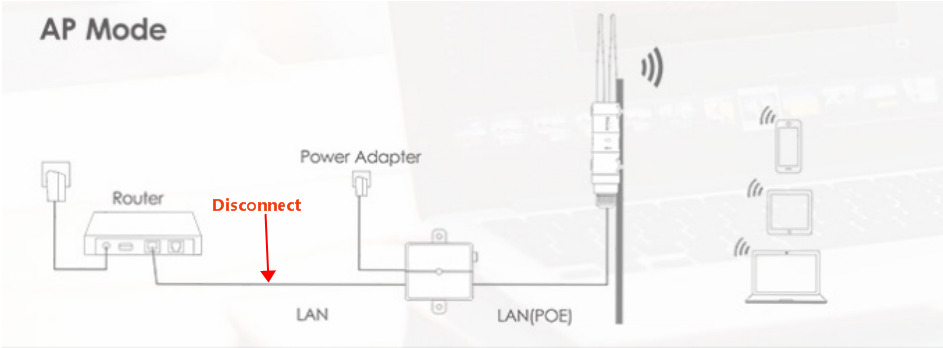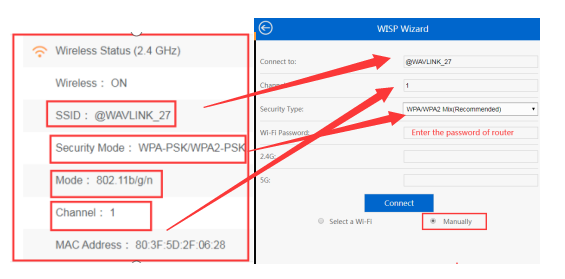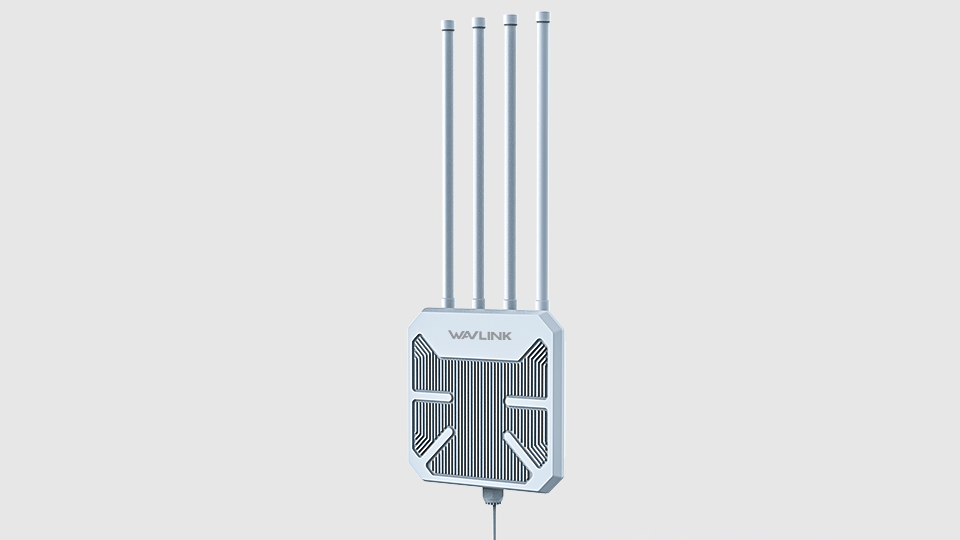Part 1: Check the primary router
1. Disconnect the connection between the WAVLINK outdoor AP and the main router, and test the network speed by connecting the computer directly to the LAN port of the main router through an Ethernet cable.
2. Check the broadband restriction configurations of the router
Sometimes, in order to reasonably allocate broadband resources, we will carry out bandwidth control or connection number limit in the router, which will lead to limited speed measurement results. Therefore, we can check whether the router is enabled with bandwidth control, connection number limit and other functions, and ensure that the speed measurement is performed after it is turned off.

3. Restart the router to clear the cache.
Some users do not have the habit of restarting the router in daily life. Periodically restarting the router helps clear unnecessary data and cache, enabling the router to be lightly loaded and providing good network experience
Part 2 : Check the WAVLINK outdoor Wi-Fi range extender
Location:
1. The installation height should not exceed 2 to 3 meters above the receiving height of the wireless terminal.
2. Try not to install the WAVLINK outdoor AP against the wall. You can choose to tie it to a pole, which is to avoid physical obstruction and interference to the greatest extent.
3. As with the second recommendation, try to install WAVLINK outdoor AP in an open area.

Optimize the Wi-Fi range extender settings:
4. Check the channel interference
You are advised to use Wi-Fi Analyzer to perform a channel interference test to check whether the current channel has interference. If so, the channel with the least interference is selected for speed measurement
For example, the current 5G wireless channel set by WAVLINK AP is 40, and the bandwidth is 80MHz. After interference test, it is found that the current 5G frequency band has more interference, then the 5G wireless channel is set to other channels, such as 153, and the bandwidth is 80MHz.
5. Select 80MHz band bandwidth (if the interference is large, 40MHz is recommended for actual use)

6. Update the firmware of the WAVLINK outdoor AP.
7. Reboot the WAVLINK outdoor AP
8. Hard reset the WAVLINK AP by pressing and holding its reset button for 8 seconds.
Part 3 : Check the Ethernet cable
A Category 5 Ethernet cable can deliver up to 200Mbps, but for gigabit broadband we recommend at least a Category 6 Ethernet cable or higher
Part 4: Upgrade your router or WAVLINK outdoor Wi-Fi range extender
If your ISP provide broadband over 100Mbps or reaches 1,000Mbps , it's best to choose a router or Wi-Fi extender with gigabit network ports.
Part 5: Confirm the maximum wireless rate supported by the connected clients
Both wireless terminals and wireless routers have the maximum wireless rate supported. Most wireless speed measurement is slow because the maximum wireless rate supported by the terminals is relatively low. General mobile phone support wireless rate is lower than computer wireless card, especially 2.4G single frequency terminal.
The wireless protocol rate is generally the highest transmission rate supported by both wireless terminals and wireless routers. For example, if the maximum speed of the wireless 5G band supported by the wireless router is 1300Mbps, and the maximum speed of the wireless 5G band supported by the wireless terminal is 866Mbps, the maximum negotiated wireless rate theory of the two can only reach 866Mbps.
(1) If the wireless negotiation rate is normal, but subject to the wireless rate supported by the wireless terminal itself, the wireless speed measurement cannot reach the wired rate. It is a normal phenomenon, you can replace other high-specification wireless devices to test the network speed
(2) If the wireless protocol rate is low (lower than the normal value), it may be related to problems such as distance, wireless router Settings, environmental wireless interference, and wireless devices themselves. Go to the next step.
Note:
(1) The wireless rate supported by the wireless 5G band is higher than 2.4G. If the terminal supports 5G, it is recommended to use the wireless 5G band for speed measurement.
(2) Considering some protocol overhead of wireless communication, the speed measurement value can generally reach 50-60% of the negotiated rate in the non-interference environment.
Get the Scoop First
Subscribe to our official website to receive exclusive first-hand news and stay up-to-date on our new product releases and promotions!

